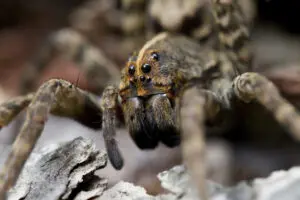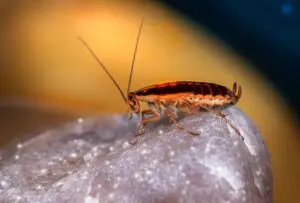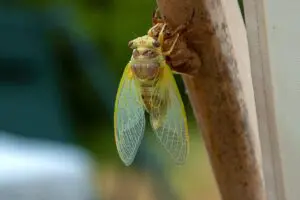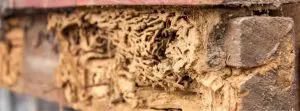
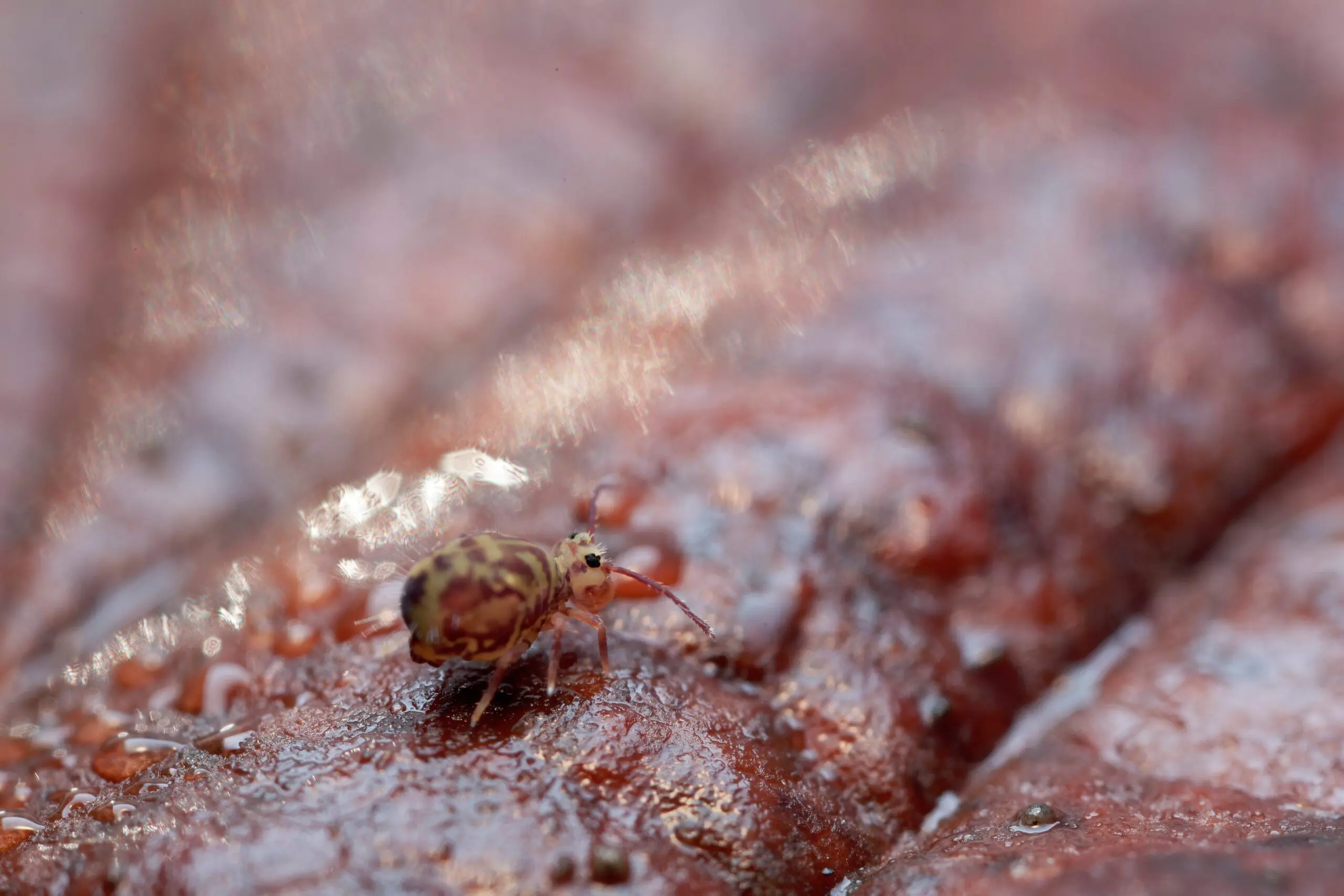
If you’re curious about that “jumping bug” in your basement or crawl space, read on. Learn to distinguish Springtails from Fleas or Silverfish so you can choose the right solution to this occasional invader.
FAQ 1: What do springtails look like and why are they concerning?
Springtails are tiny arthropods that are closely related to silverfish. Their heads are oval-shaped with a pair of antennae. Their bodies are elongated and they range in color, with most being light brown or cream-colored, and some being white, dark brown, gray or black. Adults are typically between 1/16 and ⅛ inch long.
Springtails get their name from the pair of fork-like appendages attached to their abdomens which, when not in use, are tucked away under their bodies. These appendages, called furcula, extend rapidly downwards when released, which propels the springtail upwards and forward. Springtails are sometimes mistaken for fleas because of their appearance and ability to jump. Fleas, though, are very difficult to crush, while springtails are fairly easily crushed.
Springtails and fleas also prefer to live in different conditions. Springtails are mostly a nuisance pest, causing minor damage to plants and hindering plant hardiness. They do not sting or bite, but they are able to carry bacteria from their habitats to wherever they land. These bacteria can cause secondary infections.
FAQ 2: Where do springtails live?
Springtails are found all across the United States, as they are able to live in almost any type of climate. They need moisture to survive, and they feed on decaying plants, algae, molds, and fungi. For these reasons, they gravitate towards very damp areas.
Their outdoor locations differ depending on season. During the winter and early spring in areas that get snow, springtails can be found on top of snow or around the bases of plants where the snow has melted. During the summer, or year-round in non-snowy areas, they can be found virtually anywhere that is very damp. Some such places include decaying logs, mulch, moist soil, compost piles, gardens or potted plants, and the areas surrounding pools, hot tubs, and Jacuzzis. Mushroom houses and greenhouses are also prime environments for springtails. Indoors, they tend to nest near drains, crawl spaces, wall voids, basements, and anywhere else that is prone to moisture buildup.
FAQ 3: Why do I have a springtail problem?
Reasons for a springtail infestation vary depending on whether the infestation is outdoors or indoors. An outdoor infestation may occur because of a buildup of moisture and decaying plant material, or through the introduction of infested mulch and fertilizers.
Springtails don’t typically enter buildings unless their outdoor habitats become too dry. When this happens, springtails may enter buildings through windows, doors, vents, and virtually any other space that is roughly 1/16 inch or larger. Hot weather may cause them to gather along the sides of buildings in large numbers.
A springtail infestation in an indoor area that should be dry may be an indication of a leak of some sort. Infestations will sometimes occur shortly after the construction of a building if the building materials used were damp.
FAQ 4: When are springtails active?
Springtails are active year-round, and prefer relatively cool temperatures. During the winter in snowy areas, they are most active on sunny days. During the warmer months, or year-round in non-snowy areas, they are more active on cooler days. Springtails need moisture, so they are not typically very active on hot, dry days. Most of their activity occurs during the afternoon and early evening, when temperatures are cooler.
FAQ 5: What’s the best way to prevent a springtail infestation?
The most important step in preventing a springtail infestation is limiting excess moisture. Outdoor swimming pools and drainage issues should be fixed and gutters should be kept clear. Plant beds should be allowed to drain properly so the soil can dry between water applications.
Any food sources and potential habitats should also be removed. This means disposing of decaying logs and plants, removing debris piles, and keeping mulch and soil 6 inches away from foundations. Firewood should be stacked away from walls and on a palette or other elevated surface, rather than directly on the ground. Indoors, any leaks should be fixed. Seals around tubs, sinks, doors, and windows should be tight.
Dehumidifiers and fans can help reduce moisture levels in generally damp areas like basements and crawl spaces. They are also helpful for limiting moisture buildup on humid days. If you have questions about springtails on your property, or think you may have an infestation and need to get rid of springtails, call one of our experts today.




